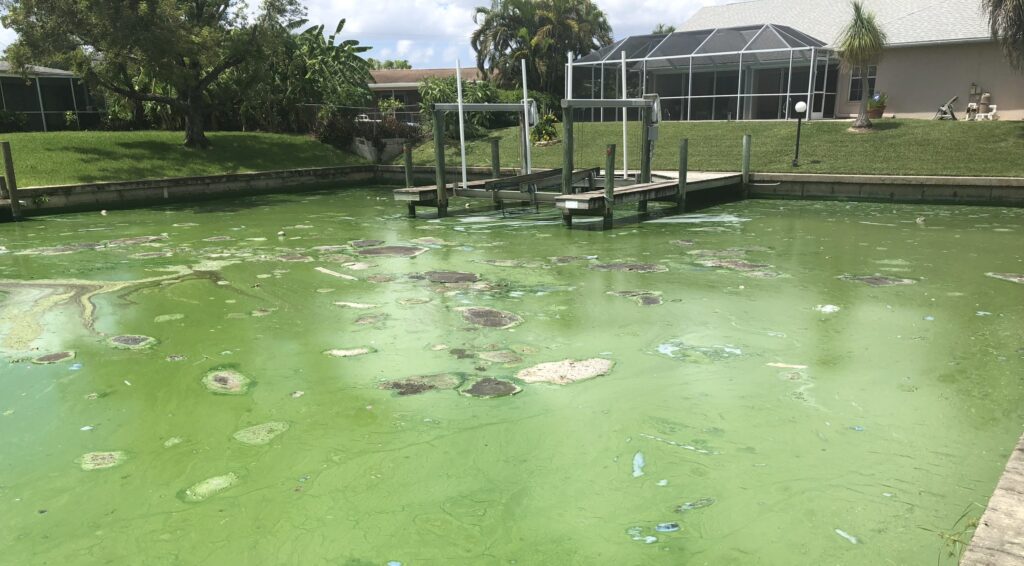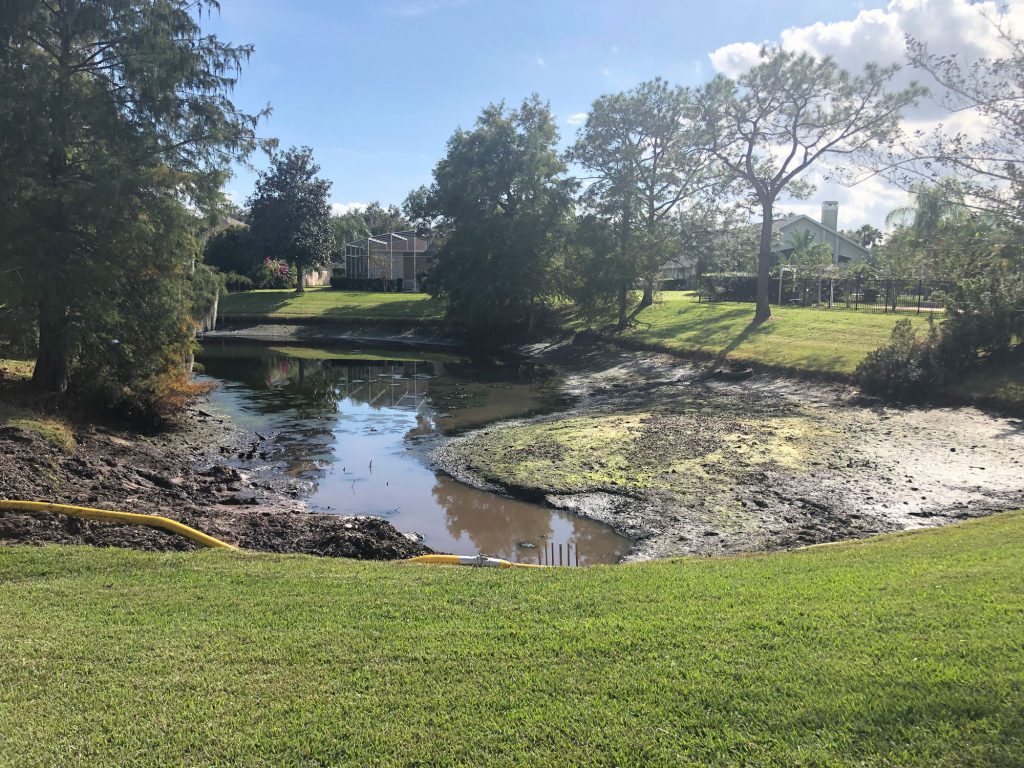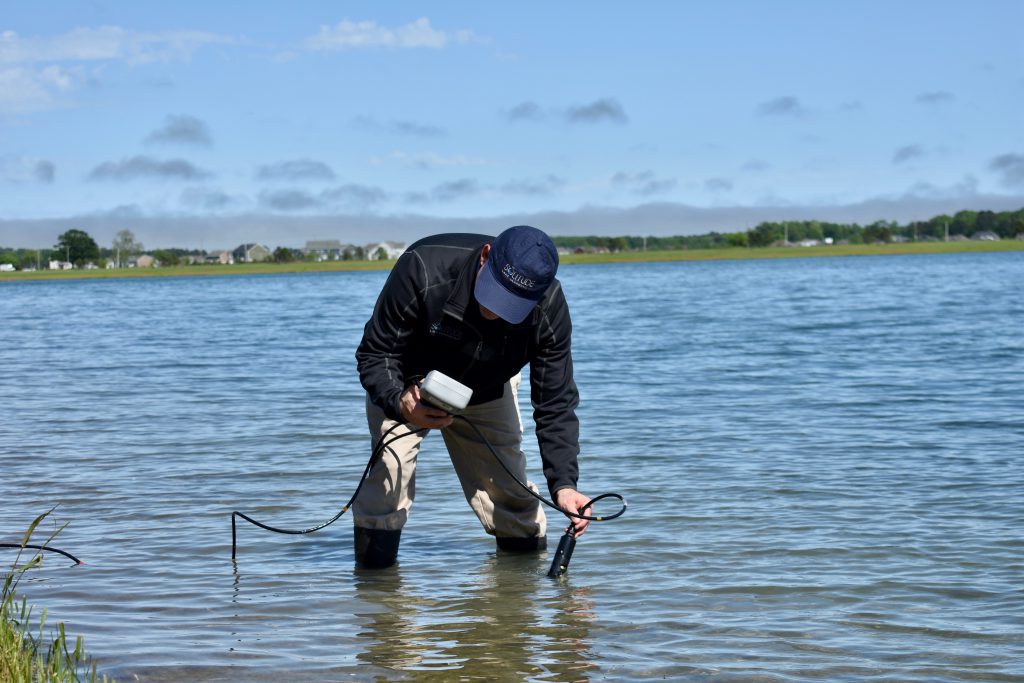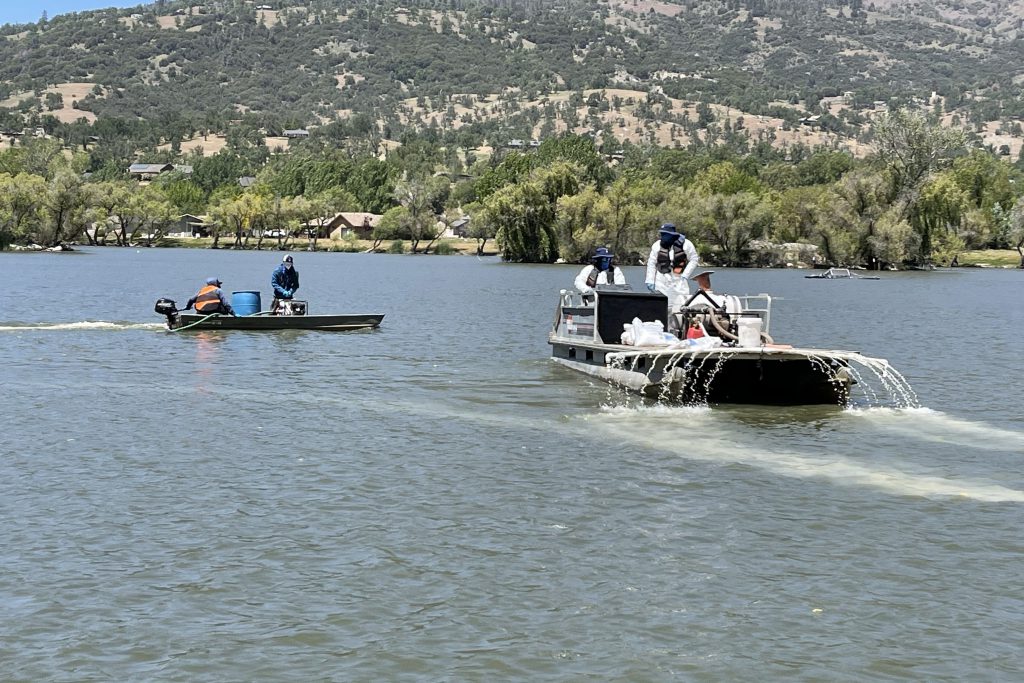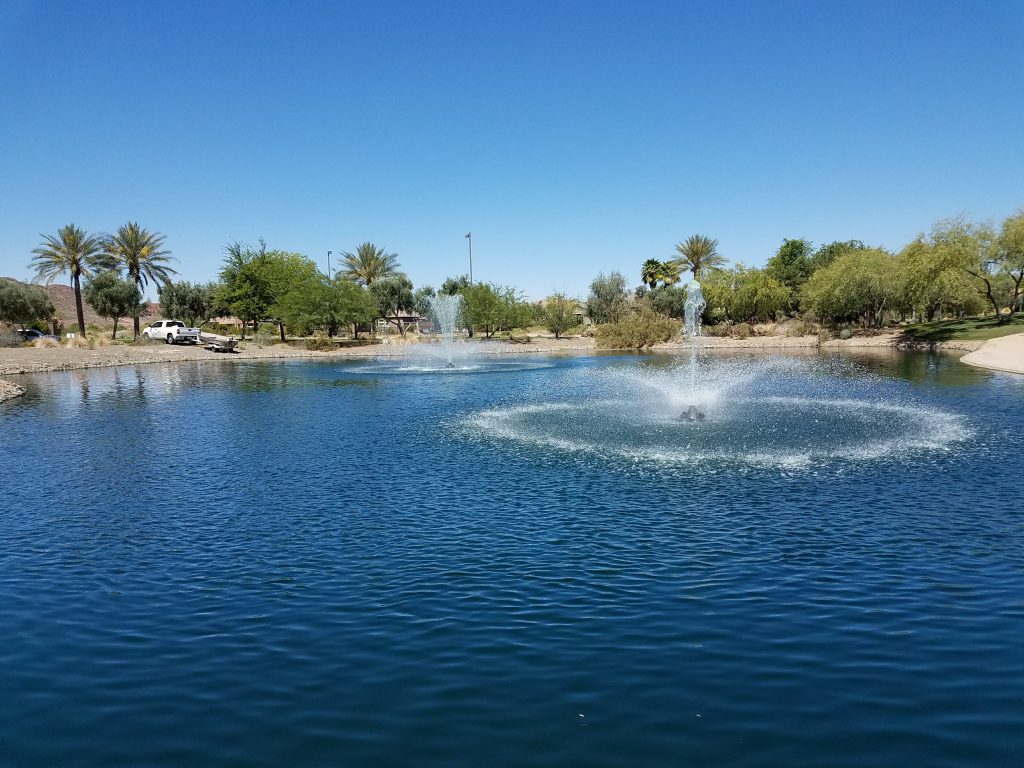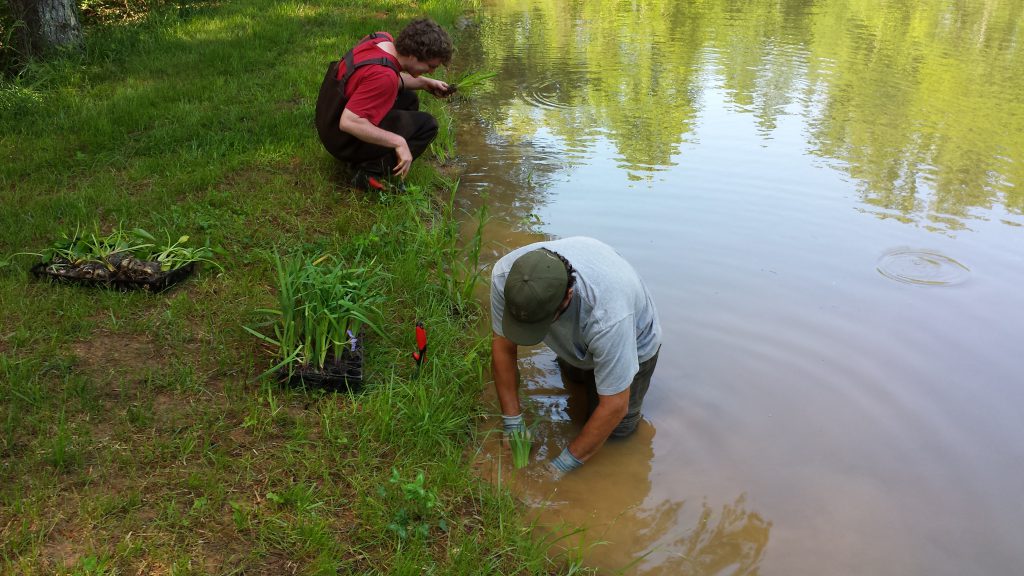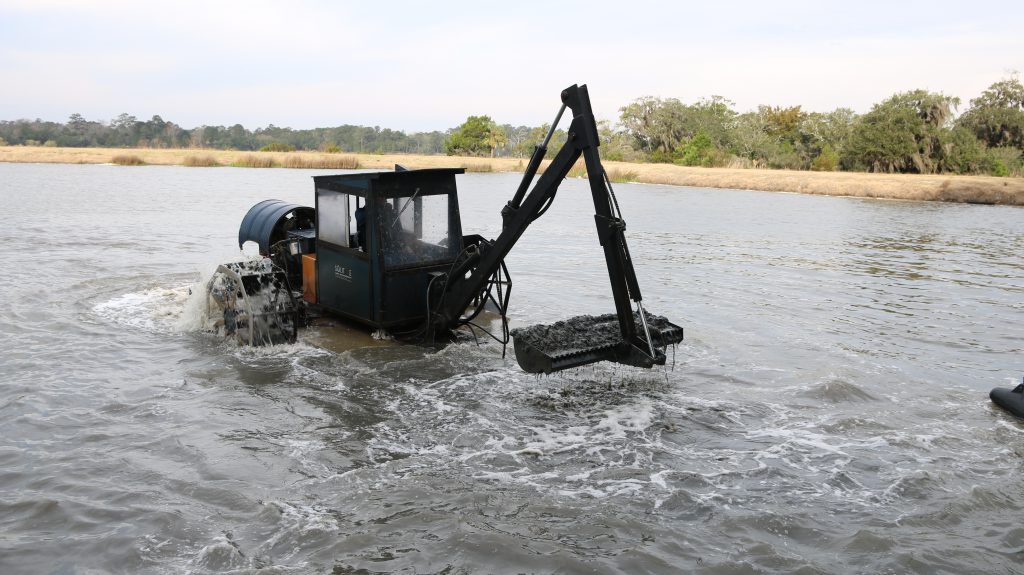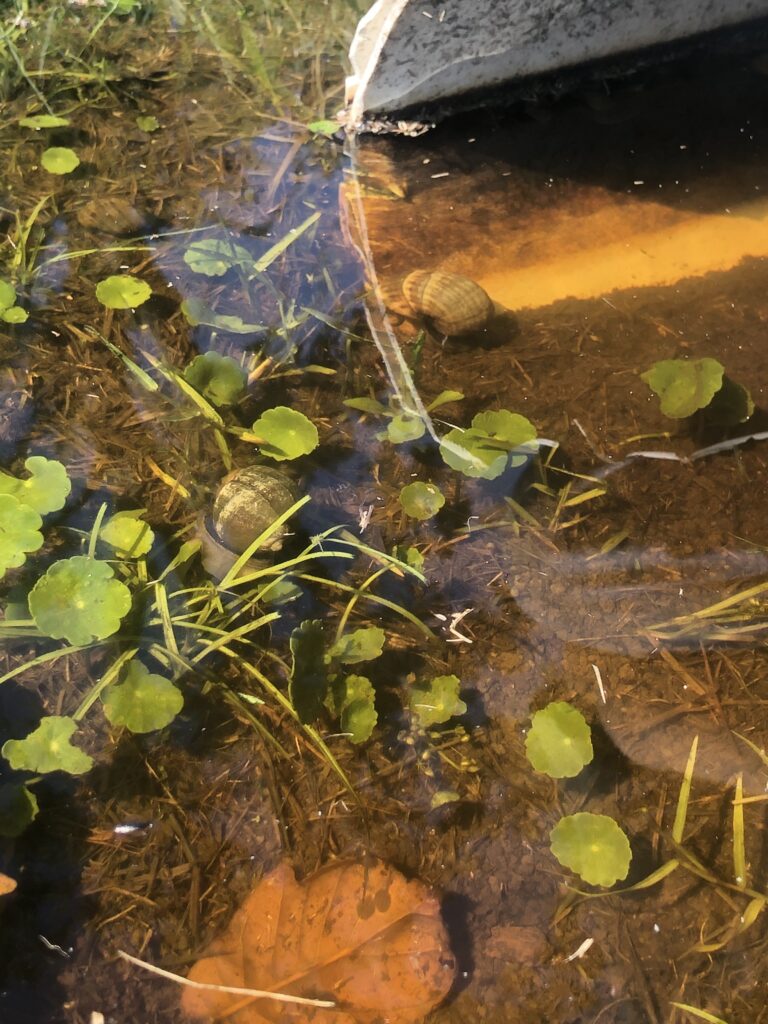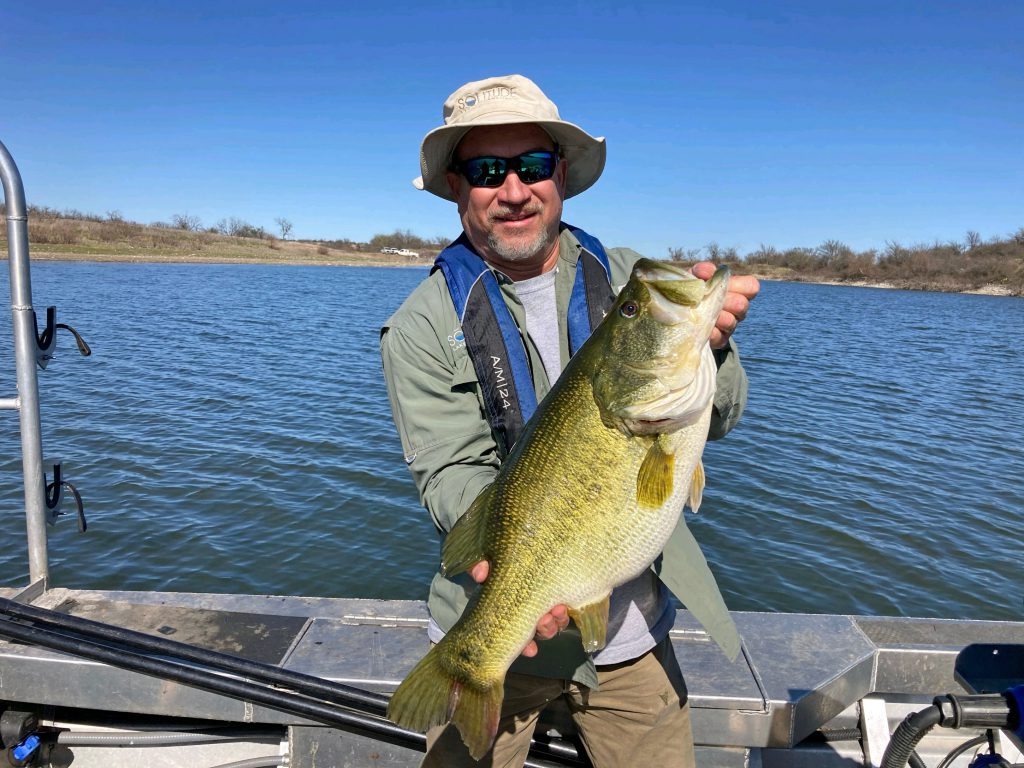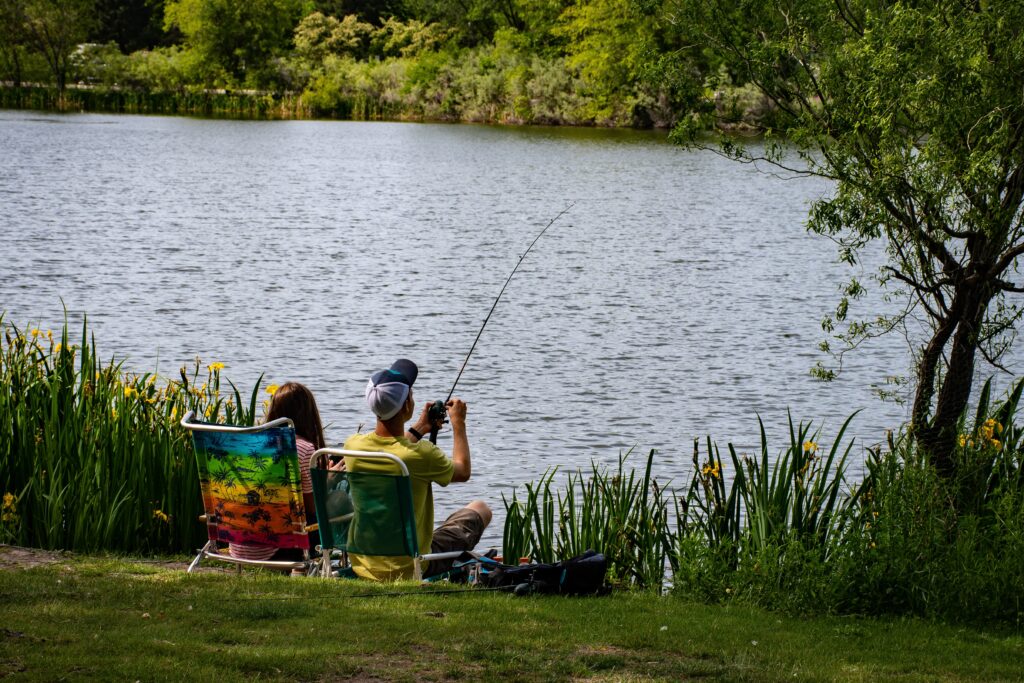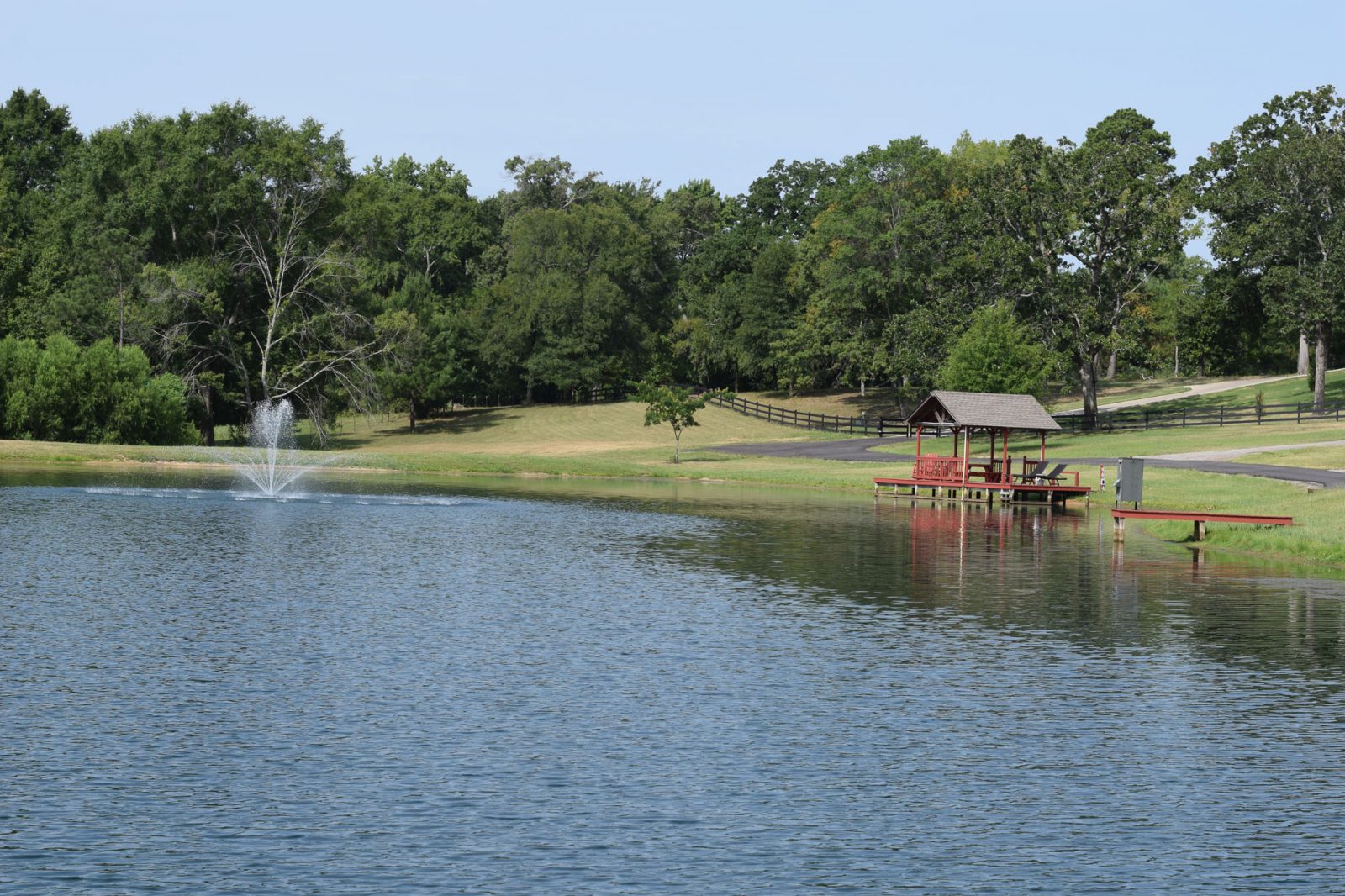
How the Summer Months Can Change Your Lake... for the Worst
As summer arrives, there is great anticipation to get out on the water. Boating, swimming, fishing, grilling out and playing lawn games on the shoreline with friends and family are some of life’s simple pleasures. Unfortunately, weeds, algae, and muck can extinguish the joy that lakes and ponds provide. If precautions are not taken before the growing season to preserve the health of a waterbody, green nuisance growth and poor water quality may become a distraction when the summer months return and only worsen as the year goes on.
How Warm Temperatures & Nutrients Impact Water Quality
A chain reaction is set off each year as temperatures rise and the days become longer. Consistent sunlight triggers photosynthesis, the process by which plants convert light into energy. As they grow, they absorb nutrients like phosphorus from the soil around them. Aquatic plants play a necessary role in the food chain by providing food and shelter for native wildlife. However, without the right checks and balances, they may overpopulate beyond control. If growth and die-off become disproportionate to the surrounding environment, it may be a sign that nutrients are overly abundant – and create a cycle of nutrient loading that is difficult to reverse.
Directly connected to the cycle of nutrient loading is the development of bottom muck. It’s one of the last things someone wants to feel between their toes as they enter the water for a summer swim. But even more importantly, it should be a warning signal for stakeholders that their waterbody is becoming more mature.
A Lake's Aging Process
Like humans and animals, lakes and ponds age (a phenomenon called eutrophication). The build-up of muck, debris, sediment, and other nutrient-rich organic matter drives this process. Over time, property owners and managers may notice that their waterbody floods more often or looks cloudier on a daily basis. This is common as lakes and ponds lose depth and volume. Though eutrophication is natural due to weather and wildlife activity, it can be accelerated by urban development, agriculture, landscaping work, summer recreation, and other seasonal activities that aggravate sediment along the shoreline.
Shoreline Erosion & The Spread of Invasive Species
Shoreline erosion is not only unsightly and hazardous, it can lead to significant water quality problems. When water quality is imbalanced, especially paired with warm summer temperatures, nuisance weeds, algae, and toxic cyanobacteria (blue-green algae) are more likely to develop. Cyanobacteria, in particular, can release toxins that are deadly to wildlife, fish, and dogs, and can cause sickness and long-term health problems in humans, so summer water activities should be strictly avoided if a harmful algal bloom has been identified.
In addition to increased aquatic weed and algae growth, the spread of invasive species is often exacerbated by summer activities. Boats and water equipment can pick up small plant fragments and accidentally introduce them to new waterbodies. Severe summer storms and hurricanes are also known to displace invasive plants and wildlife. When invasive species become established in non-native habitats, they crowd out beneficial wildlife and create dangerous imbalances that may degrade the health of an ecosystem. Invasive armored catfish, for example, burrow deep into lake and pond shorelines. Without natural predators to keep their populations in check, they may continue to thrive until the shoreline collapses.
Summer only comes once a year, so in order to enjoy your waterbody to the fullest, it’s crucial to implement proactive measures before the season kicks off. As part of a professional annual management program, aquatic experts incorporate many solutions and strategies on a year-round basis to ensure your waterbody stays in peak condition at all times.
Water Quality Testing
Aquatic experts use water quality testing to evaluate nutrient concentrations, as well as other characteristics like dissolved oxygen (DO) levels, pH, conductivity, and ammonia. The unique composition of these and other elements in the water column provides important insight into the health of the waterbody and its biological “age.” This information can be used to develop custom management solutions that help reverse the effects of maturation.
Nutrient Remediation
Naturally occurring products like Phoslock, Aluminum sulfate (alum), and EutroSORB can be introduced to the water to help limit the impact of excess nutrients. When water quality conditions are more balanced, aquatic weeds, algae, and toxic cyanobacteria are less likely to grow.
Fountains and Aeration
If water quality tests reveal depleted DO, fountains, surface aerators, and submersed aerators can help increase DO and improve circulation throughout the water column. DO is essential to the natural processes within the ecosystem, including fish respiration, native plant growth, and the decomposition of organic matter.
Buffer Management
Damaged shorelines can be detrimental to the health of lakes and ponds. Stakeholders can get ahead of erosion problems by introducing vegetative buffer plants along the perimeter of their waterbody. The complex root systems that develop will help contain soil and improve the longevity of the shoreline. Native plant buffers will also help slow and filter stormwater as it flows into the waterbody, preserving the integrity of the bank.
Shoreline Restoration
If a shoreline is already severely damaged, aquatic experts may recommend a complete restoration using patented soil containment materials and bioengineering techniques that deliver many years of shoreline stability. The new shoreline can then be sodded or planted with vegetation or landscaping features to blend seamlessly into the surrounding property. Because these projects require some downtime, the off-season is a fantastic time to complete the work.
Muck and Sediment Removal
Accumulated muck, sediment, and debris will eventually need to be removed in order to restore depth and volume to a waterbody. Mechanical hydro-raking is an excellent tool to remove detritus in specific sections. Aquatic experts often use bathymetric mapping technologies to create a precise model of a lake or pond bottom and identify the areas that need it most. If build-up has become too excessive, dredging may be necessary to completely reset the waterbody. Dredging can be costly, so it’s important to begin budgeting several years to decades ahead of a dredging project.
Invasive Species Management
Like invasive aquatic weeds, invasive wildlife can be detrimental when introduced to new ecosystems and require several years of consistent management to fully eradicate. Management strategies largely depend on the target animal and the type of environment they have invaded. For invasive snails and mussels, new products are available that safely and effectively target these invasive species. If you’re looking to control invasive fish species like armored catfish, physical removal is often considered the most effective approach. Tools like electrofishing boats, traps, and specialized screens aid in the physical removal of invasive armored catfish.
Florida waterbodies often struggle with invasive species. Learn more about the invasive animals found in Florida and how you can manage nuisance populations.
Fisheries Management
If you dream of catching big bass, stocking ahead of the season can help ensure a robust fish population is waiting for you come summer. Professional fisheries managers can help evaluate your fisheries goals and work with you to cultivate a thriving fishery through habitat design, supplemental feeding, electrofishing, and other fisheries management strategies.
Public Education
In addition to implementing proactive maintenance solutions, public education is a key part of protecting your water resources. Informed residents and visitors can help support ongoing management efforts and limit their cultural impact on nearby lakes and ponds.
- Limit nutrient loading by reducing fertilizer use, properly disposing of trash and pet waste, and bagging leaves and lawn clippings to prevent them from decomposing in the water.
- Understand the characteristics of common invasive species such as Phragmites, watermilfoil, and hydrilla, and notify environmental authorities if you suspect the presence of an invasive plant or animal.
- Inspect boats and water equipment for invasive plant fragments before and after leaving the water.
- Use biodegradable detergents and cleaners when washing vehicles and pressure-washing houses.
- Do not stray from identified pathways when entering or spending time around the water
Avoid Water Quality Frustrations with Annual Management
Lakes and ponds can be amazing assets or a big source of frustration. Property owners and managers work hard to keep them looking their best and deserve water resources they can take pride in when warmer temperatures arrive. Don’t let your waterbody be a summer bummer – get ahead of water quality issues through an Annual Management Program.
SOLitude Lake Management is a nationwide environmental firm committed to providing sustainable solutions that improve water quality, enhance beauty and preserve natural resources.
SOLitude’s team of aquatic scientists specializes in the development and execution of customized lake, stormwater pond, wetland and fisheries management programs. Services include water quality testing and restoration, algae and aquatic weed control, installation and maintenance of fountains and aeration systems, shoreline erosion control, muck and sediment removal and invasive species management. SOLitude partners with homeowners associations, golf courses, private landowners, businesses and municipalities. SOLitude Lake Management is part of Rentokil, a leading business services company, operating across the United States, Canada and Puerto Rico.
For more information, visit SOLitude Lake Management at solitudelakemanagement.com, and connect on Facebook, LinkedIn and Twitter.








